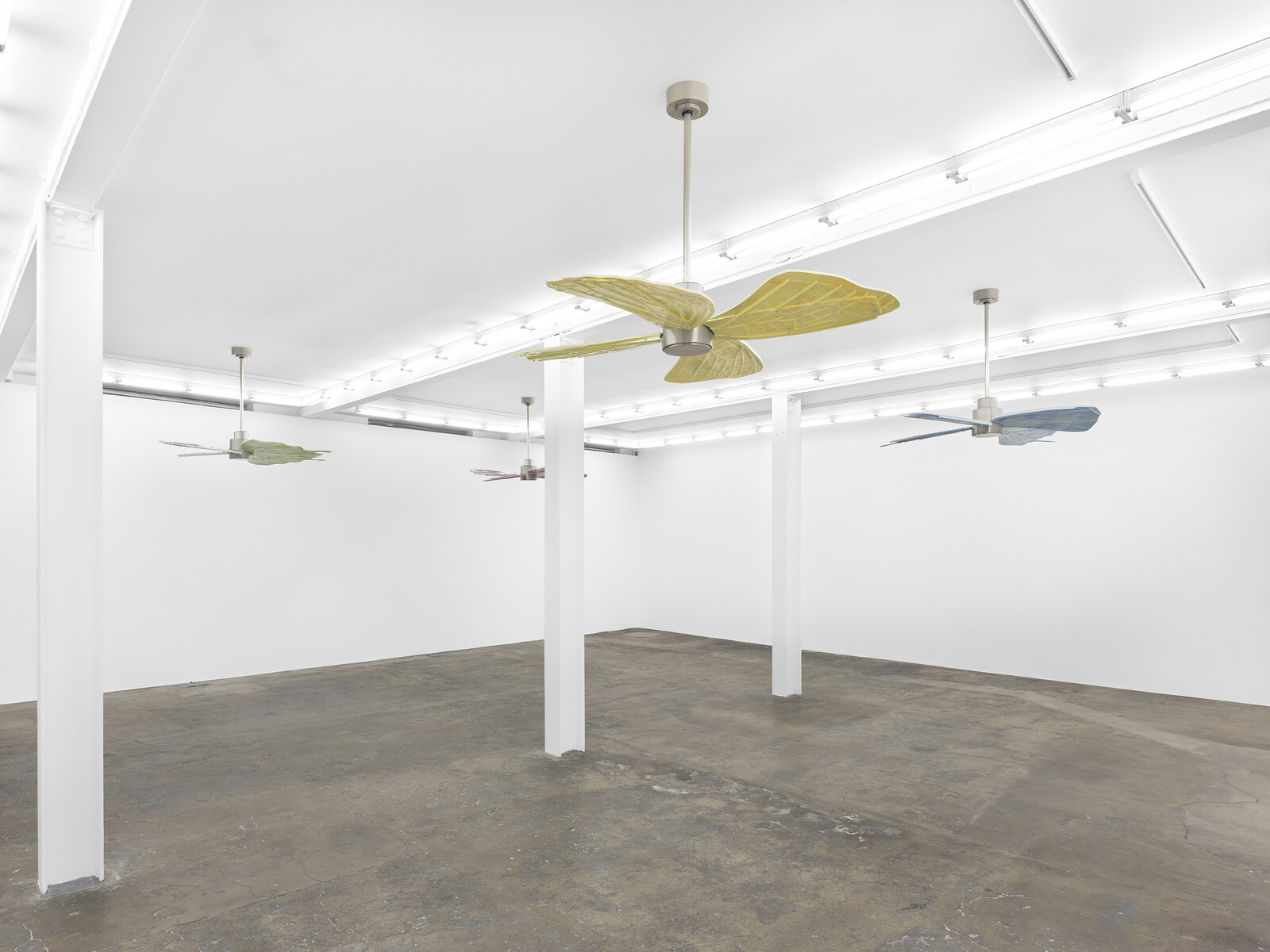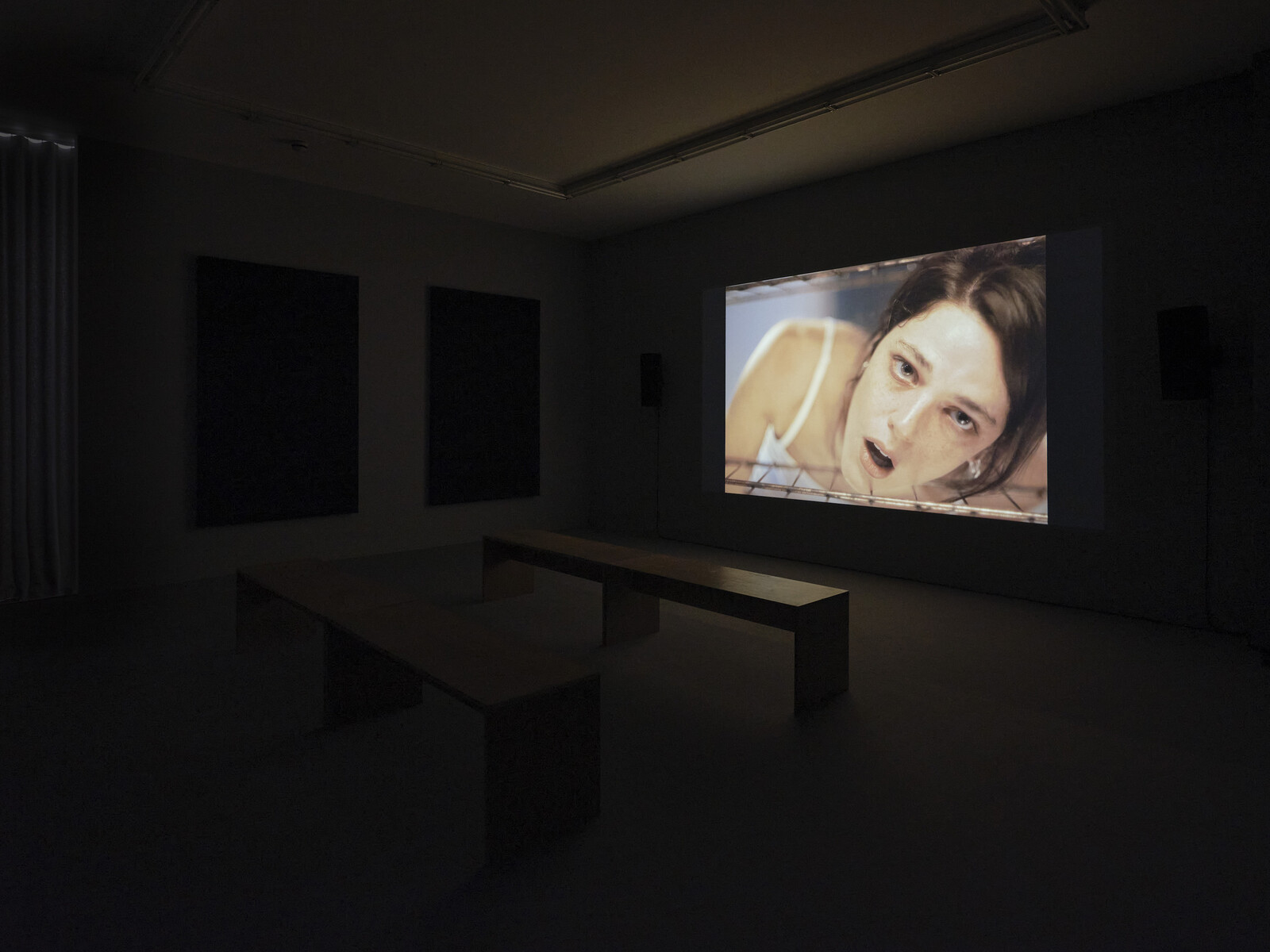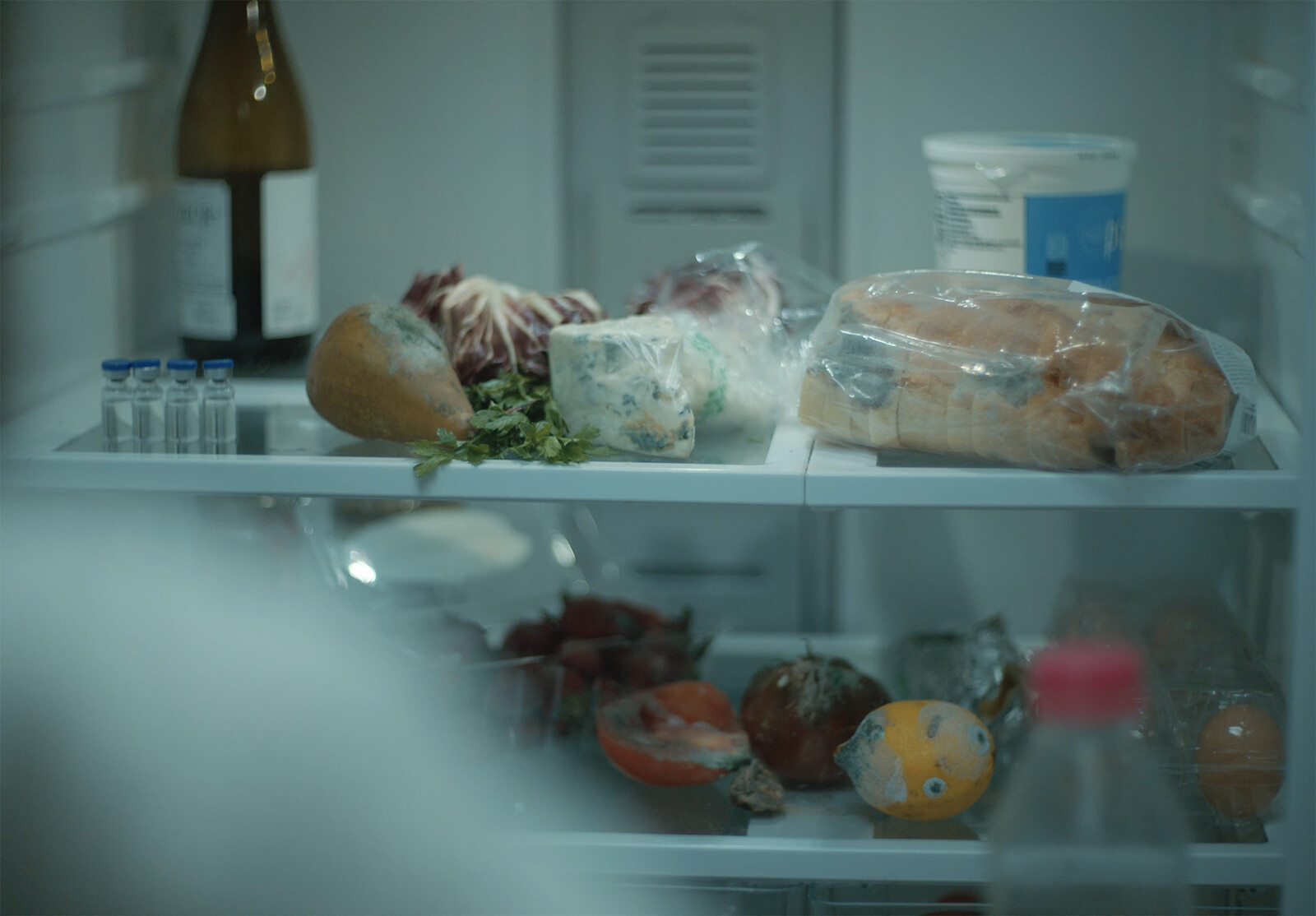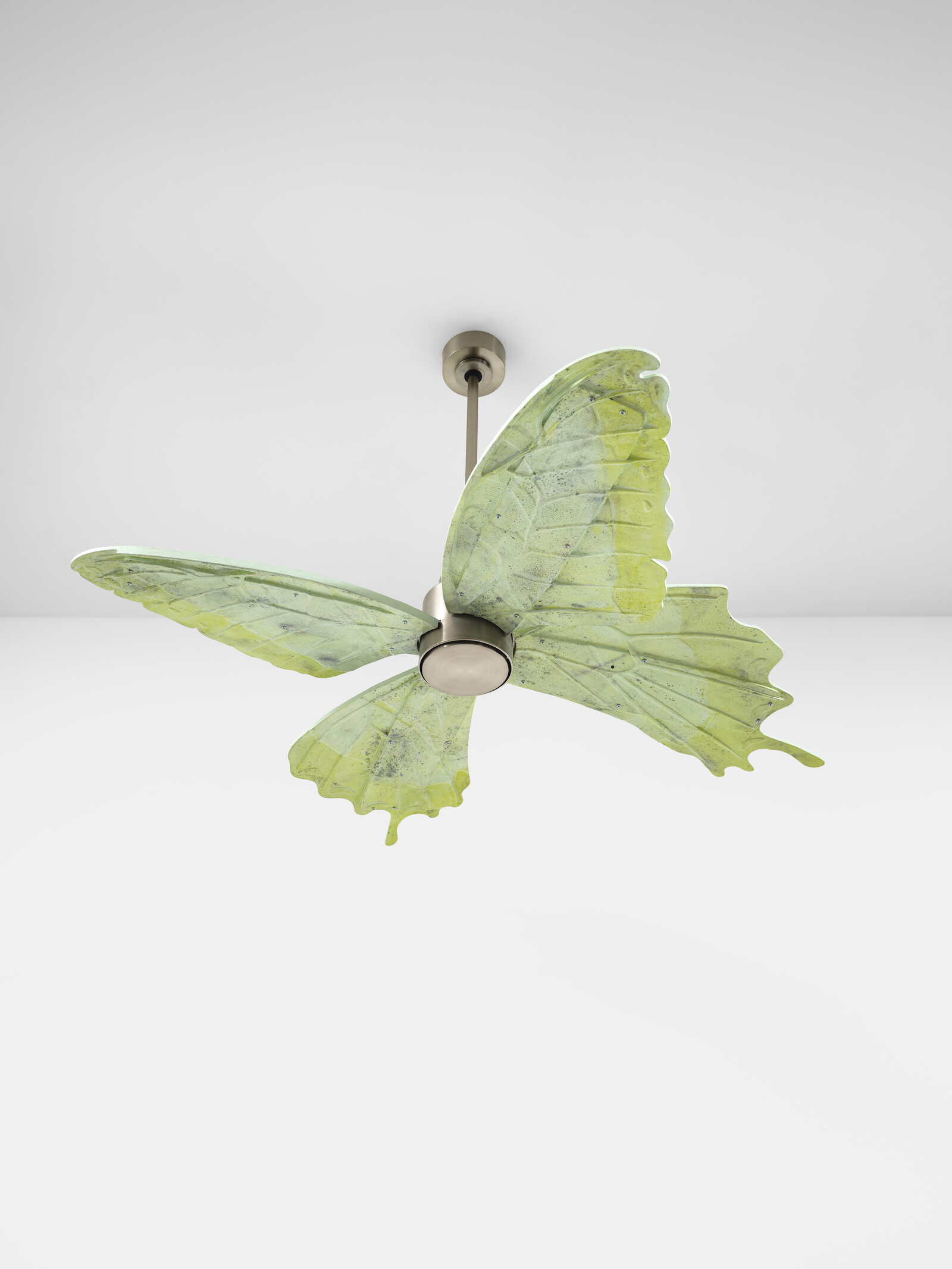Four sculptures in the form of ceiling fans hang suspended in an otherwise empty gallery. These works—all dated 2024 and presented against the fluorescent lighting, bright-white walls, and cement flooring of a traditional white cube—are fully enmeshed in the architecture, resulting in an exhibition with all the hallmarks of aesthetic minimalism arranged for the sake of affect. The intended sense is of monotony. This is achieved by the simplistic setup and, more importantly, evokes the mundanity of domesticity that defines much of Erlanger’s practice across plays, films, installations, and sculptures.
Here, each sculpture is partially comprised of various home appliances—shower curtain rods, kitchen utensil holders, lamp cords, and wastepaper bins—that make up the ostensible fans, the blades of which are moulded into the shape of butterfly wings. These appliances reference her most recent short video, Appliance (2024), which debuted earlier this year in the American artist’s first extensive institutional solo exhibition in the US, at Contemporary Arts Museum Houston. It is also screening here, in the gallery’s adjacent viewing room. Consistent with Erlanger’s use of science fiction and horror in earlier works to explore the psychology underpinning the idea of home, she here depicts absurd situations—the arm of a contractor inexplicably reaching out of a perfectly rounded, porthole-like circle carved into the floorboards, or the imprint of an electrical socket appearing on the protagonist’s cheek like the branded scar from a hot iron only to disappear—that demonstrate the character’s crumbling mental state.
A press release cites Lydia Kallipoliti’s concept of “closed worlds” to describe the human impulse to create self-contained, “climate-controlled” environments, despite the potential for damage to the wider environment. Though it’s not clear how cooling the air by use of a fan could be directly harmful to the “outside, so-called ‘natural’ world,” at least in the sense outlined in Kallipoliti’s term, it points to the felt need to control the physical environments in which we live. Meanwhile, the exhibition literature informs us something that cannot be inferred from the work itself: the butterfly wings reference Batesian mimicry, a strategy whereby harmless species take on the traits of harmful ones to avoid being eaten by predators.
The argument is that “this complex correlates to strategies of sociopolitical adaptation, wherein external conditions precipitate larger transformations.” Putting aside that the butterfly in this scenario is changing itself in response to its environment, and not attempting to change its environment to suit itself (as in Kallipoliti’s argument), this feels like a loaded assertion. The social implications of domestic appliances and the role of the home come through clearly, yet there is no discernible engagement with politics. What “external conditions” would require Batesian mimicry in the suburban architectural context recreated here? The video eschews such questions in favour of a stylized exploration of domestic mundanity and its impact on the psyche.
The punning title “Fan Fiction” could refer to the fictional narratives we construct in order to cope with our daily lives or the way we mimic others in order to survive. Remove from the show its theory-laden and overdetermining press release, and it boils down to a simple idea: the human need for control. Erlanger suggests that this desire to exert perfect control over our environments is a fantasy, revealed as absurd when we attempt to put it into practice. The butterfly wings, for instance, reveal themselves to be ineffective as fans. This nod to futility feels more consistent with the sophistication of Erlanger’s wider work.
The artist is adept at storytelling both as filmmaker and playwright: Appliance is an adaptation of her play “Humor in the Water Coolant,” about a woman haunted by appliances, performed at London’s ICA in 2024. She comments on human impulses through stories of lives unfolding in two related but distinct structures, “the house” and “the home.” These sites of supposed safety can hold horror, alongside all the other aspects of a lived human life.




